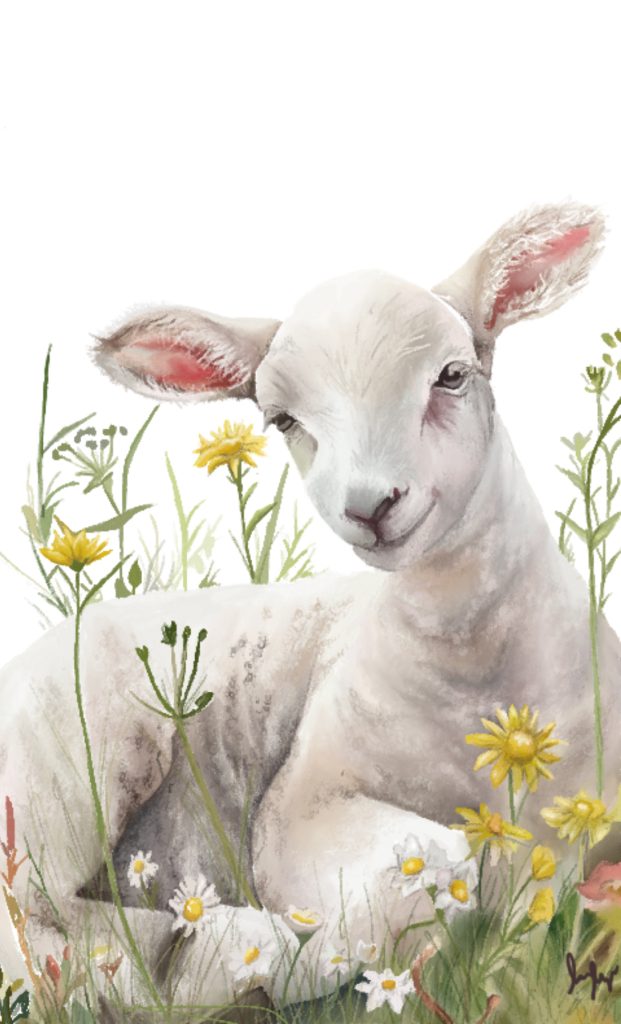A Time of Renewal: Agriculture plays an essential role in Easter

Easter symbolizes rebirth, as the Earth begins to awake from its chilly sleep. Leaves appear on the trees, birds begin to sing and the days are longer and brighter, meaning spring is in full swing and growing season for farmers is ready to start, if it hasn’t already.
Agriculture plays a major role in Easter. For some, the Easter egg is a symbol of birth and the beginning of life, much like what is seen by farmers each year during growing season and ranchers as they welcome new members to their herds.
Americans celebrating Easter will spend about $5.3 billion on food for the holiday, while nine out of 10 people celebrating Easter will purchase candy – a total of nearly $2.2 billion – making it the second best-selling candy holiday in the U.S.
Easter eggs
Many Easter traditions have been around for centuries, although they have evolved over time. One of the most prominent symbols of the holiday is the Easter egg.
The egg, an ancient symbol of new life, has been associated with pagan festivals celebrating spring, and from a Christian perspective, Easter eggs are said to represent Jesus’ emergence from the tomb and resurrection.
According to English Heritage, early Christians in Mesopotamia started dying eggs in the period after Easter, and decorating eggs is believed to date back to at least the 13th century.
The practice was adopted by Orthodox Churches, and from there, it spread into Western Europe.
However, this year, egg prices are at near-historic highs in many parts of the world as Easter approaches, reflecting a market scrambled by disease, high demand and growing costs for farmers, notes Texas A&M University AgriLife Extension.
This is the second year in a row consumers have faced sticker shock ahead of Easter and Passover, both occasions in which eggs play prominent roles.
According to the U.S. Bureau of Labor, in February the Consumer Price Index for eggs increased 5.8 percent, which was 17 percent below the level of 2023, with an average price of three dollars per dozen. This price was 47 cents per dozen higher than in January.
David Anderson, Texas A&M University AgriLife Extension economist at Bryan-College Station in Texas, states in a March 19 article, “Egg prices peaked in February at $3.29 per dozen according to U.S. Department of Agriculture (USDA) Agriculture Marketing Service retail grocery store data.”
Last year around the Easter holiday, USDA reported retail eggs nationally were $2.74 per dozen, and Anderson says consumers can expect them to be around $2.99 per dozen this year.
According to American Egg Board President Emily Metz, “Government regulations play a part in lifting egg prices. Multiple states, including California and Massachusetts, have passed cage bans for egg-laying hens, and this year bans are set to take effect in Washington, Oregon and Michigan.”
She adds, “Converting to cage-free facilities is a big investment for farmers, and consumers may not always realize it’s a factor in the higher prices they see at the grocery store.”
However, it is estimated about 180 million eggs will be purchased this year in the U.S. for Easter.
Easter meals
When preparing a traditional Easter dinner, no table spread is complete without some kind of protein.
Roasts, glazed hams and lamb have graced tables for years and have established themselves as foods associated with Easter.
Lamb is the oldest protein dish associated with Easter and stems back to pre-Christian time to the first Passover.
USDA reports, as the Easter holiday approaches lamb cuts on offer were sharply higher and lamb features showed a sharp increase in rack, bone-in leg, boneless leg and semi-boneless leg.
Ham has become a popular American Easter dish, a tradition that began in Germany in the sixth century, as cured hams were ready to eat by the time spring rolled around.
According to the National Pork Board, consumers bought 8.5 million pounds of whole hams in the two weeks leading up to Easter in 2023, spending $20.6 million.
Although ham maintains its top spot on the Easter menu with 51 percent of those preparing dinners planning to serve it up this year, the percentage has fallen 10 points since 2022.
Easter candy
According to the National Research Federation, Easter spending for this year is expected to reach $22.4 billion – most of which is spent on candy.
The National Confectioners Association (NCA) reports confectionery sales for the Easter season will surpass $5 billion and nearly two-thirds of Americans will be purchasing candy for Easter.
Over 90 million chocolate Easter bunnies are produced each year, with 60 million consumed in the U.S. alone, according to a Civic Science poll.
Polling data also shows Reese’s continues its reign as the top chocolate brand this year – 46 percent of U.S. adults say they have purchased a Reese’s product in the last month.
But, Hershey’s comes in a close second with M&M’s trailing in third. It’s not surprising Reese’s Peanut Butter Eggs take the top spot for favorite classic Easter candy, while Cadbury Creme Eggs and Chocolate Easter Bunnies are tied for second.
One of the biggest debates of the season is how to eat a chocolate Easter bunny, NCA reports.
Americans are divided – 78 percent start with the bunny’s ears, 16 percent jump in to eat the feet first and six percent of people go right for the tail.
For those who prefer their chocolate egg-shaped, 42 percent of people want a solid chocolate egg, 35 percent of consumers are looking for a filling on their first bite and 23 percent of Americans are happiest with a hollow treat.
The NCA projects U.S. confectionery sales will zoom to $61 billion by 2028.
Melissa Anderson is the editor of the Wyoming Livestock Roundup. Send comments on this article to roundup@wylr.net.





